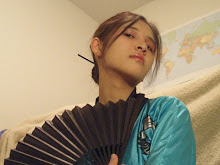 Dayak is the collective name given to the aboriginal inhabitants in Borneo. The Dayaks mainly live in the south and west, in Kalimantan area, Indonesia. Some other Dayaks live in Sabah and Sarawak, Which are part of Malaysia. The Dayak population today is about 2 million people, out of total population of 35 million on the island of Borneo. They live mainly along the large riverbanks and in the forest.The Dayak indigenous religion is Kaharingan, a form of animism.There are differences in the practice of Kaharingan among groups. For example in some religious customary practices, when a noble (kamang) dies, it is believed that the spirit ascends to a mountain where the spirits of past ancestors of the tribe reside. The spirit is believed to descend to partake in celebration, a mark of honour and respect to past ancestries and blessings for a prosperous future.
Dayak is the collective name given to the aboriginal inhabitants in Borneo. The Dayaks mainly live in the south and west, in Kalimantan area, Indonesia. Some other Dayaks live in Sabah and Sarawak, Which are part of Malaysia. The Dayak population today is about 2 million people, out of total population of 35 million on the island of Borneo. They live mainly along the large riverbanks and in the forest.The Dayak indigenous religion is Kaharingan, a form of animism.There are differences in the practice of Kaharingan among groups. For example in some religious customary practices, when a noble (kamang) dies, it is believed that the spirit ascends to a mountain where the spirits of past ancestors of the tribe reside. The spirit is believed to descend to partake in celebration, a mark of honour and respect to past ancestries and blessings for a prosperous future. Blowpipe is a weapon for the Dayak in Sarawak. It is used as an abet to track through the rain forest, as wells as a hunting tool for live food such as squirrels, wild boar and birds. An experienced hunter can accurately hit its target at an awe-inspiring speed with a single blow at one end of the blowpipe. This weapon is perforated by means of a long metal rod with a chisel shaped bit. The rod is moved on its own axis, back and forth, with the bit slowly drilling into the wood. The weapon itself is made of a long rod with a metal spear tied with rattan at one end.The blow dart is inserted at the other end using the spear to point to the hunting target. Blow piping is a kind of task that requires practices and skills. A random person can never blowpipe as well as a Dayak. A skilled Dayak hunter can blowpipe an astounding distance of .
Blowpipe is a weapon for the Dayak in Sarawak. It is used as an abet to track through the rain forest, as wells as a hunting tool for live food such as squirrels, wild boar and birds. An experienced hunter can accurately hit its target at an awe-inspiring speed with a single blow at one end of the blowpipe. This weapon is perforated by means of a long metal rod with a chisel shaped bit. The rod is moved on its own axis, back and forth, with the bit slowly drilling into the wood. The weapon itself is made of a long rod with a metal spear tied with rattan at one end.The blow dart is inserted at the other end using the spear to point to the hunting target. Blow piping is a kind of task that requires practices and skills. A random person can never blowpipe as well as a Dayak. A skilled Dayak hunter can blowpipe an astounding distance of . 
 Dayak tattoo is a spiritual artform that merges images of humans, animals, and plants into one unit, expressing the proliferation of life and the integration of living and spiritual beings in the cosmos. Death and fertility were the primary axes around which tattoo creativity spiraled. Tattooing offered visual testimony to the refusal of Dayak individuals to accept the finality of death and assert the indestructibility of their being. By imitating the life of the gods in everyday ritual, the Dayak obtained their own form of divine power that ensured the perpetuation of human life in a continuum of eternity. Therefore, tattoos were articulating symbols engraving implicit Dayak ideologies of existence upon the living canvas of human flesh.Dayak warriors attained a specific tattoo when they had “taken a head” as a headhunter or Ainu women in western Asia who used tattooing to announce that a young girl had begun to menstruate.
Dayak tattoo is a spiritual artform that merges images of humans, animals, and plants into one unit, expressing the proliferation of life and the integration of living and spiritual beings in the cosmos. Death and fertility were the primary axes around which tattoo creativity spiraled. Tattooing offered visual testimony to the refusal of Dayak individuals to accept the finality of death and assert the indestructibility of their being. By imitating the life of the gods in everyday ritual, the Dayak obtained their own form of divine power that ensured the perpetuation of human life in a continuum of eternity. Therefore, tattoos were articulating symbols engraving implicit Dayak ideologies of existence upon the living canvas of human flesh.Dayak warriors attained a specific tattoo when they had “taken a head” as a headhunter or Ainu women in western Asia who used tattooing to announce that a young girl had begun to menstruate. Dayak is the most important indegeneous people in Malaysia. If you ever visit Malaysia one day, try out the Dayak blow piping and see far you can blow pipe.

No comments:
Post a Comment